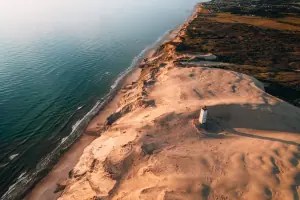“Unlocking Hidden Perspectives: A Guide to Hidden Photo Composition for Travel Inspiration
Related Articles Unlocking Hidden Perspectives: A Guide to Hidden Photo Composition for Travel Inspiration
- Beginner-Friendly Travel Video Editing Apps: Tell Your Story On The Go
- DSLR Video Editing Travel Checklist
- Creative Travel Time-Lapse For Beginners: Capturing The Essence Of Your Journey
- The Beginner Drone Travel Shots Checklist: How To Capture Stunning Aerial Footage
- Cinematic Travel Photography: Mastering Composition For Visual Storytelling
Introduction
Today, we’re excited to unravel an engaging topic: Unlocking Hidden Perspectives: A Guide to Hidden Photo Composition for Travel Inspiration. Together, we’ll uncover insights that inform, inspire, and open new perspectives for our readers.
Table of Content
Unlocking Hidden Perspectives: A Guide to Hidden Photo Composition for Travel Inspiration

In the vast and ever-evolving realm of travel photography, where countless images vie for attention, the quest to capture unique and compelling shots has become more crucial than ever. While postcard-perfect vistas and iconic landmarks remain popular subjects, it’s the ability to unveil hidden perspectives that truly elevates a travel photograph from ordinary to extraordinary. Hidden photo composition, a technique that involves strategically concealing parts of a subject or incorporating unexpected elements into the foreground, offers a powerful way to spark curiosity, create depth, and tell stories that resonate with viewers on a deeper level.
The Essence of Hidden Photo Composition
At its core, hidden photo composition is about suggestion rather than explicit revelation. It’s the art of hinting at a larger scene, inviting the viewer to mentally fill in the gaps and engage their imagination. This technique can be achieved through various means, such as:
- Framing with Foreground Elements: Using natural or man-made objects in the foreground to partially obscure the main subject.
- Selective Focus: Employing a shallow depth of field to blur certain areas of the image, drawing attention to specific details while leaving others intentionally vague.
- Obscuring with Shadows or Light: Utilizing shadows or bright light to create areas of concealment, adding an element of mystery and intrigue.
- Reflections: Employing reflective surfaces like water, mirrors, or glass to offer a fragmented or distorted view of the subject.
- Peeking Through: Shooting through openings, doorways, or foliage to reveal a glimpse of the scene beyond.
Why Hidden Composition Works
The effectiveness of hidden photo composition lies in its ability to tap into our innate human curiosity. By withholding complete information, the photographer challenges the viewer to actively participate in the viewing experience. This engagement fosters a sense of discovery and encourages the viewer to linger longer, contemplating the hidden narrative within the image.
Moreover, hidden composition can add depth and dimension to a photograph, creating a sense of layering that draws the eye deeper into the scene. The strategic use of foreground elements can also provide context, scale, and a sense of place, further enriching the storytelling potential of the image.
Inspiration from Around the World
Let’s embark on a visual journey to explore how hidden photo composition can be applied in diverse travel settings:
-
Urban Landscapes:
-
Framing with Architecture: In bustling cityscapes, use architectural elements like archways, bridges, or windows to frame iconic landmarks or street scenes. This technique can create a sense of depth and perspective, while also highlighting the interplay between the built environment and human activity.
-
Reflections in Urban Puddles: After a rain shower, seek out puddles to capture reflections of buildings, streetlights, or passersby. The distorted and fragmented reflections can add a surreal and artistic touch to your urban photographs.
-
Peeking Through Graffiti: Explore urban art districts and look for opportunities to shoot through gaps in graffiti murals or street art installations. This can create a dynamic and edgy composition, juxtaposing the raw energy of street art with the surrounding urban environment.
-
-
Natural Wonders:
-
Framing with Foliage: In lush forests or jungles, use foliage like leaves, branches, or vines to frame waterfalls, mountains, or wildlife. This technique can add a sense of depth and immersion, while also creating a natural vignette that draws the eye to the main subject.
-
Shadows and Light in Deserts: In arid landscapes, utilize the dramatic shadows and harsh light to create areas of concealment and intrigue. Capture silhouettes of camels or desert plants against the setting sun, or use shadows to emphasize the textures and patterns of sand dunes.
-
Reflections in Lakes and Rivers: Seek out calm lakes or rivers to capture reflections of mountains, forests, or the sky. The mirrored image can create a sense of symmetry and tranquility, while also adding a surreal and dreamlike quality to your photographs.
-
-
Cultural Encounters:
-
Peeking Through Doorways and Windows: In traditional villages or historical sites, look for opportunities to shoot through doorways, windows, or archways to capture glimpses of local life. This technique can create a sense of intimacy and mystery, while also providing a window into the cultural context of the scene.
-
Framing with Textiles and Handicrafts: In markets or artisan workshops, use colorful textiles, handcrafted objects, or traditional tools to frame portraits of locals or scenes of daily life. This can add a sense of authenticity and cultural richness to your photographs.
-
Shadows and Light in Religious Sites: In temples, mosques, or churches, utilize the interplay of shadows and light to create a sense of reverence and spirituality. Capture silhouettes of worshippers against stained glass windows, or use shadows to emphasize the architectural details of the sacred space.
-
Practical Tips for Mastering Hidden Composition
- Experiment with Different Angles and Perspectives: Don’t be afraid to get low to the ground, climb to a higher vantage point, or move around your subject to find the most compelling angle.
- Pay Attention to the Foreground: Carefully consider the elements you’re using to frame or obscure your subject. Make sure they add to the overall composition and don’t distract from the main focus.
- Utilize Depth of Field: Experiment with different aperture settings to control the depth of field. A shallow depth of field can be used to blur the foreground or background, drawing attention to specific details.
- Embrace Shadows and Light: Pay attention to how shadows and light interact with your subject. Use them to create areas of concealment, emphasize textures, or add a sense of drama.
- Be Patient and Observant: Hidden photo composition often requires patience and a keen eye for detail. Take your time to observe the scene and wait for the right moment to capture the perfect shot.
- Tell a Story: Think about the story you want to tell with your photograph. Use hidden composition to create a sense of mystery, intrigue, or emotional connection.
The Ethical Considerations
As with any photographic technique, it’s essential to consider the ethical implications of hidden photo composition, especially when photographing people. Always be respectful of privacy and cultural norms, and avoid capturing images that could be considered intrusive or exploitative. Seek permission when necessary and be mindful of the impact your photographs may have on the individuals and communities you’re documenting.
Conclusion
Hidden photo composition is a powerful tool for travel photographers seeking to create unique, evocative, and thought-provoking images. By mastering this technique, you can unlock hidden perspectives, invite viewers to engage their imagination, and tell stories that resonate on a deeper level. So, the next time you’re out exploring the world, challenge yourself to see beyond the obvious and embrace the art of suggestion. You might be surprised at the hidden beauty and untold stories you discover along the way.




